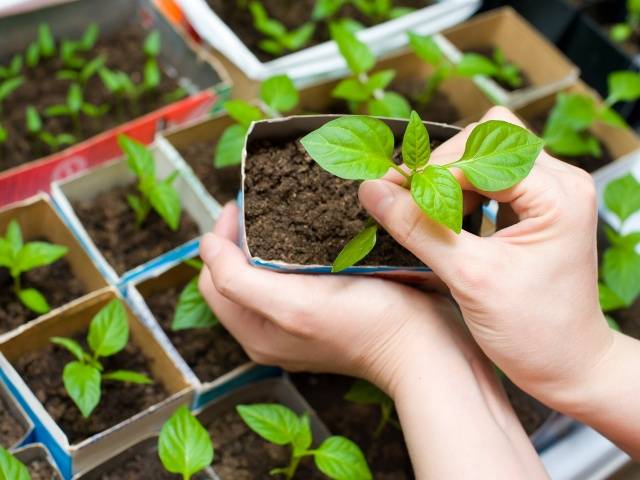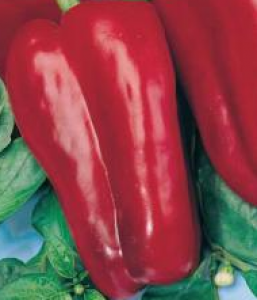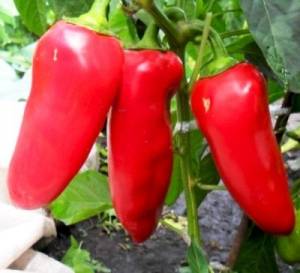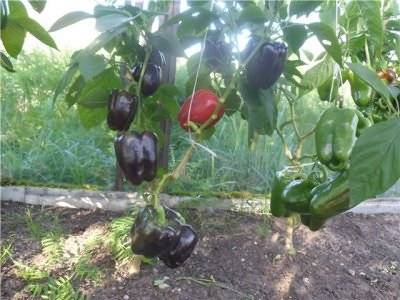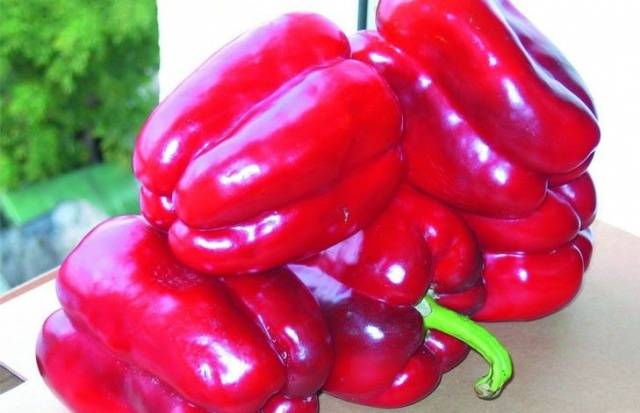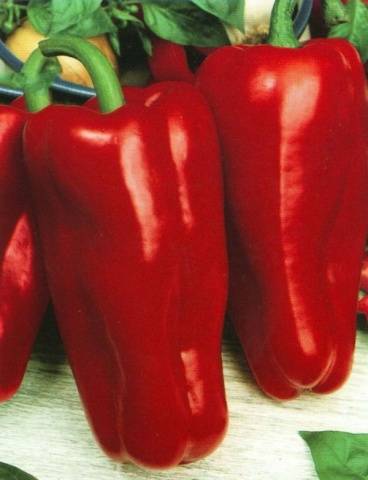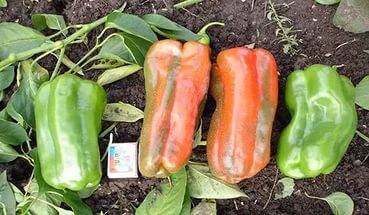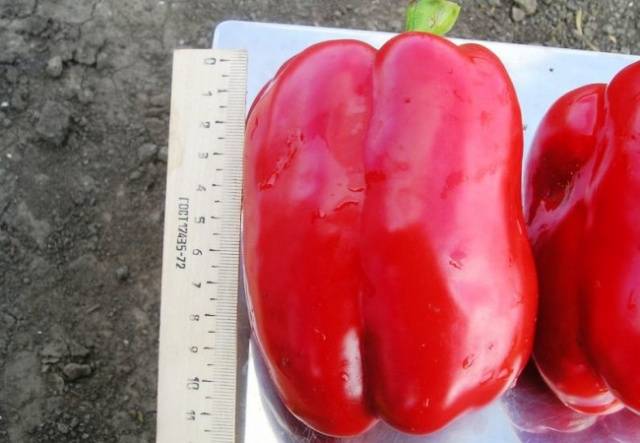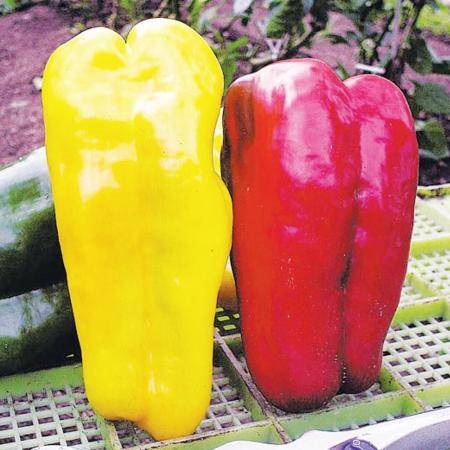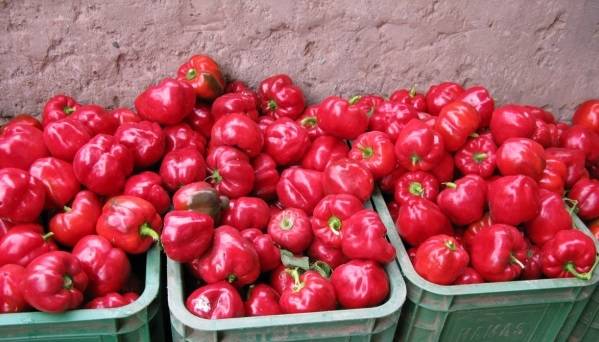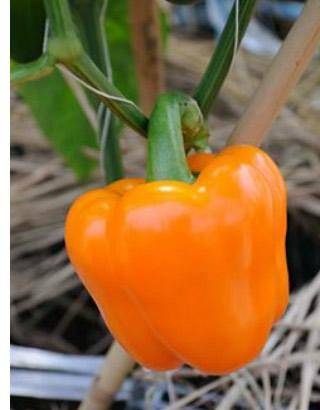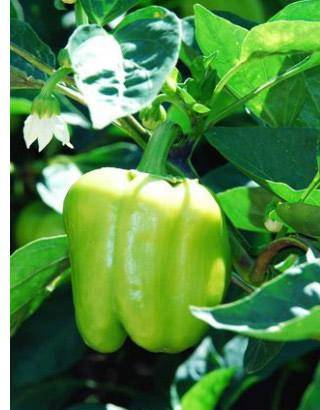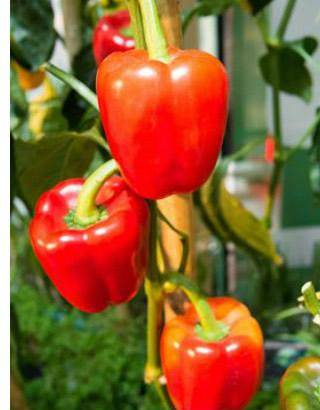Content
Despite the heat-loving sweet pepper, this plant can be grown in the harsh Siberian climate. To get a good harvest, you need to know how to properly plant and care for a crop. Due to the fact that the summer is short in the region, the fruits will not have time to ripen in an open bed, so it is more efficient to plant the plants under a shelter. In the greenhouse Siberian peppers are best grown early varieties. It is important to choose the right seeds. The package must contain a note about the possibility of cultivating the variety in Siberia, and no more than two years have passed from the date of packaging.
Features of growing Siberian peppers
Before we begin to consider varieties of pepper for Siberia, it is necessary to touch on agricultural technology. After all, even the most the best cultivars, if grown incorrectly, will yield poor harvests
So, if you want to grow Siberian pepper, you must follow three basic rules:
- Seedlings should be planted immediately only in the greenhouse.... Greenhouses for peppers are poorly suited due to the impossibility of good ventilation. August in Siberia is characterized by lingering rains. Excess moisture and lack of fresh air in the greenhouse contribute to the formation of condensation. The plant is covered with rot, and no drug can already save it.
- Siberian climate is bad for flower pollination... Firstly, the plant is sorely lacking in light due to the short days. Secondly, cold weather, as well as changes in night and day temperatures, negatively affect the formation of the ovary. If the air temperature is below +20aboutC, the fruit ovary is inhibited. However, if the temperature in the greenhouse is higher than normal, then the pollen becomes sterile. A sharp rise in temperature is possible on a sunny day. Another enemy of peppers is condensation. High humidity makes pollen damp, and pollination becomes difficult. To help the culture overcome all these negative consequences, regular spraying with solutions that stimulate the formation of an ovary will help.
- Although the heat sterilizes the pollen, it still a plant cannot live without sunlight... In order for the culture to develop well, it must be often sprayed with growth stimulants. The cold is deadly for the peppers, so greenhouses must be heated.
- By observing these three basic rules, one can already hope for a good harvest.
Review of the best varieties for Siberian greenhouses
So, we are getting closer to the moment of the culture survey. As always, first, let's take a closer look at the best greenhouse peppers.
Belozerka
The variety belongs to the mid-early ripening period. The first harvest can be obtained 110 days after planting the seedlings. The standard culture has a small bush size with a maximum height of 70 cm. Ripe fruits weigh about 100 g. Thick pepper pulp about 6 mm is highly saturated with juice. Cone-shaped fruits with a sharp top, when ripe, turn white with a golden-green tint. Fully ripe peppers can be recognized by their red color. By the way, the ripening of the fruits is very amicable.
As for the taste, first of all I would like to highlight the aroma characteristic of pepper. The juicy pulp contains a large amount of sugar, which makes it possible to use the vegetable for many dishes and winter preparations.Peppers perfectly tolerate long-term transportation, do not lose their presentation during long-term storage, the taste of plucked fruits remains the same for a long time.
In terms of fruiting, the culture is considered high-yielding. From 1 m2 about 8 kg of peppers can be harvested. The plant has good immunity to various types of rot. With proper care, the culture bears fruit for a long time.
Korenovsky
The pepper variety belongs to the mid-early ripening period. The culture has a semi-spreading bush. The first harvest ripens 4 months after planting the seedlings. The plant with large leaves is not vigorous with a maximum bush height of 65 cm. Large fruits are scattered over the bush, some specimens can weigh 165 g. The 4.5 mm thick pulp is abundantly saturated with juice. Cone-shaped fruits with a truncated top in the initial period of ripening acquire a salad color, and when fully ripe they turn red.
Excellent taste with a pronounced aroma. Peppers have a universal purpose, they are well stored for a long time without loss of taste and presentation. The plant is resistant to tobacco mosaic and other diseases. From 1 m2 about 4 kg of crop can be harvested.
Triton
The variety belongs to the early ripening period. The first harvest from the bushes can be removed a maximum of 3 months after planting the seedlings. The plant is medium-sized, 55 cm high, from the leaves forms an umbrella-shaped dome, which protects the peppers from burning in the sun. The yield is high. Over the entire period of fruiting, up to 50 fruits can be removed from one plant, which is approximately 10 kg of yield from 1 m2.
Ripe cone-shaped peppers weigh about 150 g. The 5 mm thick pulp is highly saturated with juice with a sweetish flavor. At the initial stage of ripening, the peppercorns are light with a characteristic yellowness, and when they reach maturity, they turn red. The purpose of the vegetable is more prone to winter harvesting. The dignity of the variety is its unpretentiousness to the surrounding climate and good immunity from diseases.
Merchant
The variety belongs to early ripening and appeared recently. The first harvest can be obtained in 90 days from the moment the seedlings are planted. The plant can grow up to 85 cm high. Spreading bush with medium-sized leaves. Up to three peppercorns can form in the nests on the bush. Ripe fruits are small, weighing a maximum of 70 g. The peppercorns have juicy flesh up to 7 mm thick and have an excellent aroma.
The cone-shaped fruits resemble an elongated pyramid in shape. At the initial stage of ripening, the peppercorns are green, and when they reach full maturity, they turn red. The purpose of the vegetable is universal, peppers are ideal for stuffing. The fruit is rich in vitamin C, 100 g of pulp contains 169 mg. As for the yield, then from 1 m2 you can get about 2.3 kg of peppers. The dignity of the variety is its resistance to diseases and stable fruiting. The pulp contains a large amount of sugar.
Meet other varieties of Siberian peppers for greenhouses
Having considered the best varieties of peppers for Siberian greenhouses, you can choose a suitable crop for yourself. However, the variety doesn't end there.There are many more varieties and it does not mean that they are worse. It's just that every gardener chooses the best option for himself and considers it the best for himself. So, we continue to get acquainted with greenhouse varieties of peppers.
Cardinal
The variety belongs to early hybrids and can only grow in a greenhouse. The plant grows up to 1 m in height, which requires a garter of branches. The peppers are large with thick pulp saturated with juice. From initial ripeness to full ripeness, the color of the flesh changes from green to purple.
Claudio
The culture has a highly developed branchy bush up to 1.3 m high, resistant to diseases. The variety belongs to the Dutch hybrids. Fruits ripen early in about 120 days from the moment the seedlings are planted. Red peppers are large, some specimens weigh about 250 g.
Atlant
An excellent greenhouse variety with a moderate bush size. The plant grows to a maximum of 80 cm in height, producing mature peppers after 110 days. Fruits, as they ripen, change green to red. The pulp is thick and juicy.
Cockatoo
A very tall plant can reach 1.5 m in height. Sprawling branches take up a lot of area. Peppers of this variety are best grown in large greenhouses. Fruit ripening earlier, maximum 110 days from the date of transplanting. Green peppers acquire an orange-red hue as they ripen. The largest fruit can weigh about 0.5 kg.
Orange bull
An early hybrid can be grown in the greenhouse and outdoors. A medium-sized bush grows up to 1 m in height. The plant is high-yielding and disease-resistant. The peppers turn green to orange as they ripen. Juicy fruits with a pulp thickness of 11 mm are great for salads and stuffing. Delicious preserved peppers.
Hercules
The variety tolerates almost any disease. The culture belongs to the middle ripening period. Large red fruits weigh about 300 g. Pepper has an excellent presentation after long-term storage, which is optimal for sale.
Red Bull
The variety belongs to the medium-ripening hybrids. The fertility of the plant is very high, requiring a garter of the bushes. There are so many fruits tied that the branches are unable to hold them on their own. Peppers turn green to red during ripening. The advantage of the hybrid is a good fruit ovary, even in poor greenhouse lighting. The pulp of the peppers is juicy, 8 mm thick.
Denis
The culture belongs to very early hybrids. The first crop can be harvested after about 100 days from the moment the seedlings are planted. The bushes are small, up to 70 cm in height. The weight of the ripe fruit is 400 g. In addition to greenhouses, the plant bears fruit well under the film.
Latinos
The hybrid has an average size of a bush about 1 m high. The fruit ripens early - a maximum of 110 days. Red peppers weigh about 200 g. With proper care, from 1 m2 you can get up to 14 kg of crop.
Grenada
The plant belongs to early hybrids. The peppers are quite large and have juicy flesh up to 7 mm thick. From initial ripeness to full ripeness, the color of the fruit changes from green to bright orange. The purpose of the peppers is universal.
Casablanca
The variety can be called very early maturing. The hybrid brings its first harvest on the 95th day from the moment the seedlings are planted. In the process of ripening, the fruits change color from salad to orange. Juicy pulp with a thickness of 8 mm has an excellent sweetish taste. The fruits are so large that one pepper is enough to make a large salad. The dignity of the variety is in the amicable ripening of fruits.
Flamenco
Pepper belongs to early maturing hybrids. The plant is immune to tobacco mosaic and bears large fruits with thick flesh up to 8 mm. From the moment of ripening to full ripeness, the color of the peppers changes from yellow to red.The vegetable is well stored and is not afraid of long transportation. The purpose of the peppers is universal.
Yellow bull
The culture refers to hybrids of the mid-early ripening period. From the beginning of ripening to full ripeness, the pepper changes color from green to bright yellow. Large cone-shaped fruits with a pointed top have juicy pulp up to 10 mm thick. The hybrid is able to create an ovary even under unfavorable conditions. Plucked peppers can be stored for a long time without loss of taste and presentation.
The video shows the cultivation of peppers in a greenhouse in Siberia:
Conclusion
With no experience in growing peppers in a greenhouse, even the best varieties may not yield a good harvest for the first time. Do not give up on this. You just need to more closely study the agricultural technology of this culture and over time, the work will give a good result.
